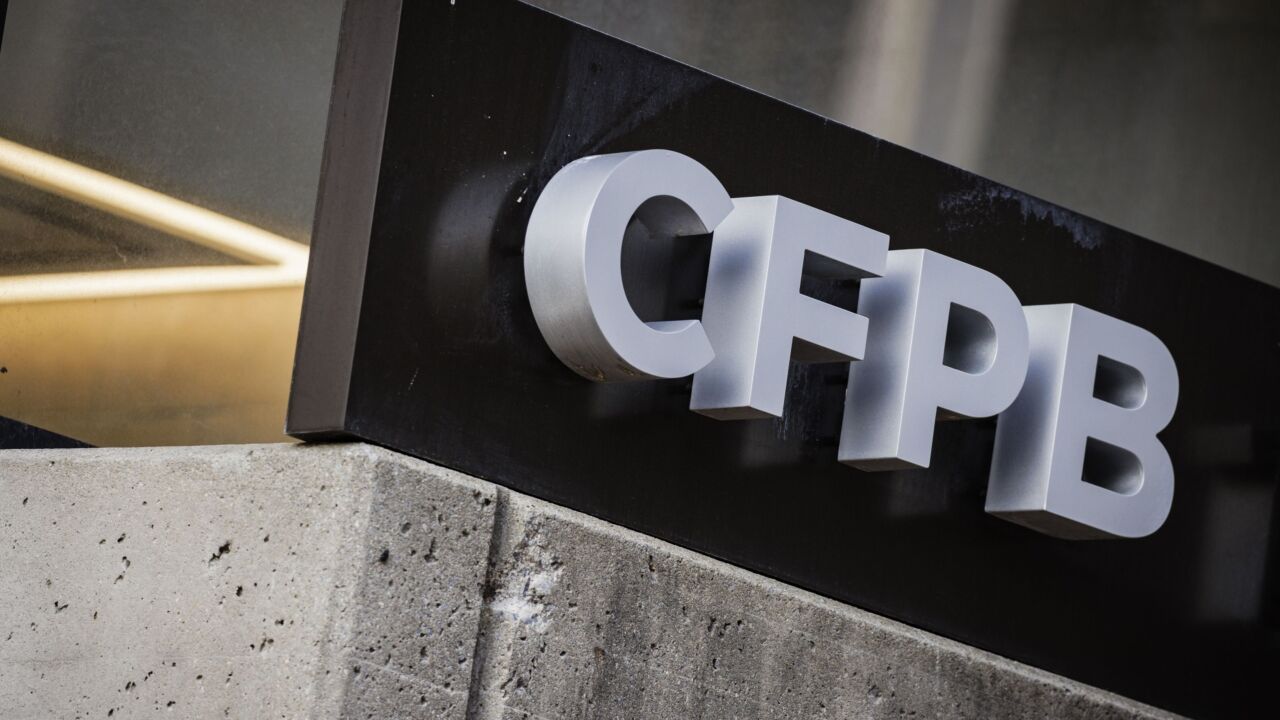
After less than two weeks in office, President Trump
The CFPB was created by the passage of the Dodd-Frank legislation of 2010 as a separate and independent regulatory authority to "regulate the offering and provision of consumer financial products or services." The agency is the brainchild of Sen. Elizabeth Warren, designed to hold Wall Street and greedy financial institutions accountable for cheating consumers. Another section of Dodd-Frank awarded the director of the CFPB a seat on the five-member FDIC board of directors. This seat was formerly held by the director of the Office of Thrift Supervision, which was eliminated by Dodd-Frank. At the time, there was an opportunity to streamline the FDIC and refocus its mission. However, the political winds were blowing strongly in another direction.
During the Biden administration, Mr. Chopra leveraged his positions as CFPB director, FDIC board member and former commissioner of the Federal Trade Commission to amass power and arguably impact the regulatory agenda more than any regulator. He advocated an expanded role for the CFPB where it had no existing authority. Rather than lead an independent agency, he advanced the liberal agendas of both the White House and Senator Warren. He led a politically motivated coup to undermine the FDIC chair only weeks after joining the FDIC board, resulting in her resignation. He personified the fact that there has never been a legitimate justification for the CFPB to have a seat on the FDIC board.
The FDIC was created in 1933 during the economic crisis of the Great Depression in order to establish stability and public confidence in the nation's financial system. The agency has three primary responsibilities: to effectively supervise state-chartered banks, to protect and preserve the integrity of the Deposit Insurance Fund, and to provide for the orderly liquidation of failed institutions. The FDIC is one of the sacred success stories in American history. It has repeatedly risen to the task during times of financial crisis to ensure stability. The FDIC is a unique institution with a unique purpose. When its independence is compromised by politics, the FDIC loses focus on its primary mission. The overwhelming majority of Americans bank at FDIC regulated and insured banks, and they deserve a regulator free of political bias when supervising the safety and soundness of those institutions. They also deserve a Deposit Insurance Fund that is managed without prejudice or bias toward any depositor. Finally, if a bank should fail, customers deserve to see the institution liquidated and assumed in an orderly and independent process.
Prior to the passage of the Financial Institutions Reform, Recovery, and Enforcement Act of 1989, or FIRREA, management of the FDIC was vested in a three-member board of directors. The Comptroller of the Currency was designated a member ex officio; the other two members were to be Senate-confirmed presidential appointees serving six-year terms. One of the two appointive directors was to serve as chairman, and not more than two members could be members of the same political party. This board structure mandated by the Banking Act of 1933 served the agency and the country well for 56 years. FIRREA was enacted in response to the savings and loan crisis of the 1980s. This legislation created the Office of Thrift Supervision and expanded the FDIC board to five members to accommodate the OTS director and one additional appointed director. This action was appropriate at the time to ensure that all insured institutions were represented.
Elizabeth Warren, Shontel Brown and Patty Murray are among those questioning Elon Musk's team's ability to access sensitive data and install email services in government agencies.
Dodd-Frank eliminated the OTS in 2010, transferring its responsibilities to the OCC. Since the OCC was already represented on the FDIC board, this was the perfect opportunity to revert to the former three-member structure. However, as previously stated, this legislation also created the CFPB and awarded the director the board seat formerly held by the OTS director. However, unlike the earlier addition of the OTS director, there was no logical basis to granting the CFPB director a seat, other than politics. The mission of the CFPB had nothing to do with the safety and soundness of the banking industry, the stability of the Deposit Insurance Fund or the orderly liquidation of failed institutions.
Ironically, as of this writing, the FDIC board presently has three members, similar to its composition before FIRREA. There are two inside FDIC directors and the acting comptroller. President Trump has designated the Treasury secretary as acting CFPB director. This gives the Department of Treasury two seats on the FDIC board, potentially countering the two inside directors. This is an interim situation and compromises the FDIC's independence until the Trump administration decides how to deal with the CFPB going forward. It is not realistic to assume that he will appoint a permanent CFPB director anytime soon, and the Department of Government Efficiency, or DOGE, under the direction of Elon Musk, has repeatedly suggested that the CFPB be eliminated due to its cost, regulatory overreach and duplicative mission. This sentiment is echoed by many Republicans in Congress.
With Chopra gone, a window of opportunity has opened. The more agencies that are represented on the FDIC board, the more convoluted it becomes. The CFPB did not even exist when the board structure was changed from three seats to five. It was logical to expand the board then and it is logical to contract it now. The timing is perfect to return to a three-member FDIC board and eliminate the outside influences that divert the agency's focus from its primary mission.
President Trump campaigned and won on a platform of streamlining government through the elimination of waste. He promised to "win" for the ordinary American. In basketball terms, this opportunity to streamline and refocus the FDIC for the benefit of the American public and to achieve a more efficient nonpartisan government is a layup.





